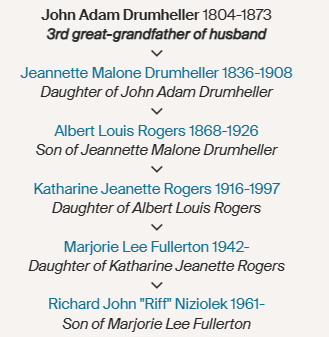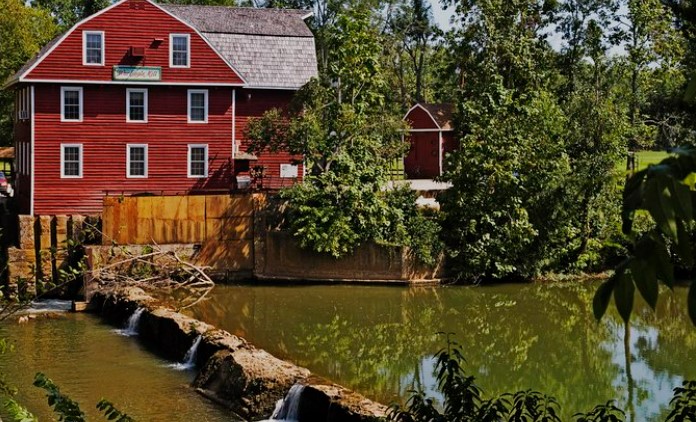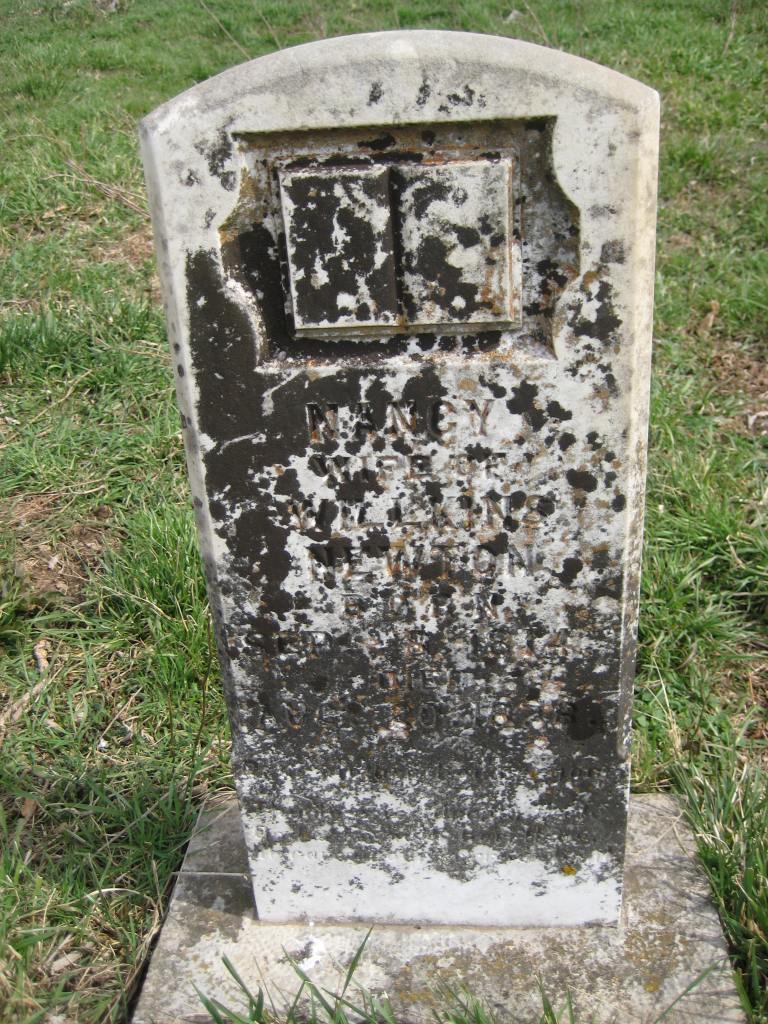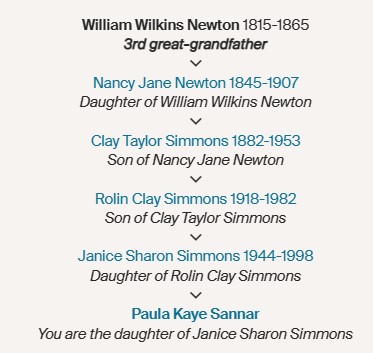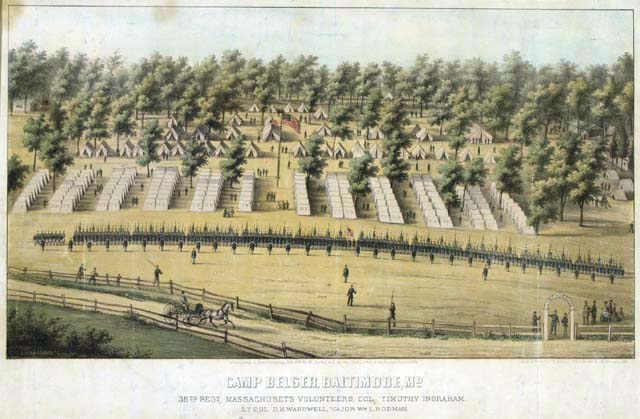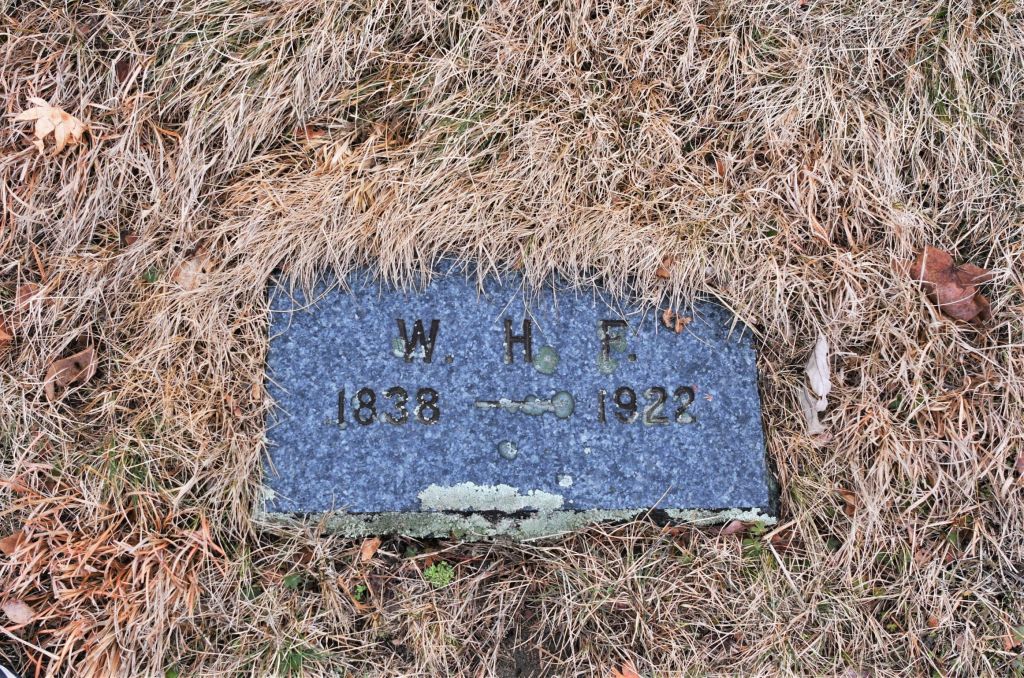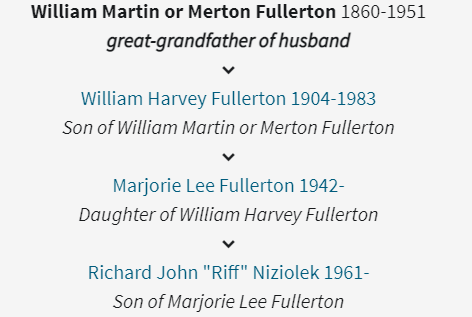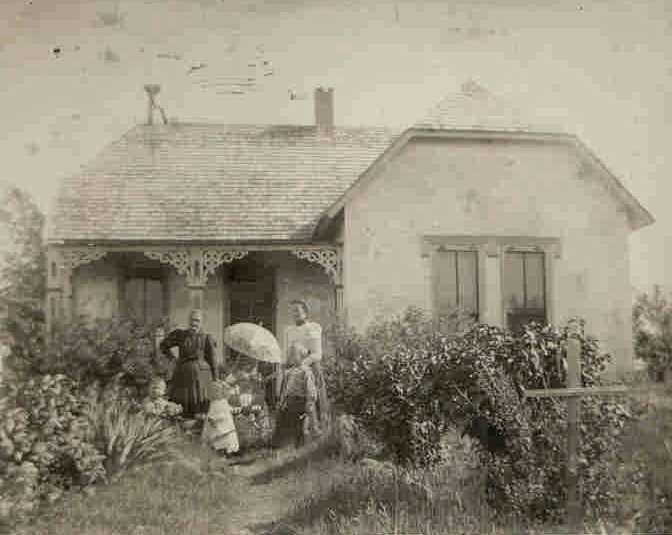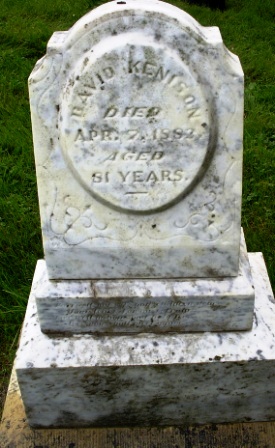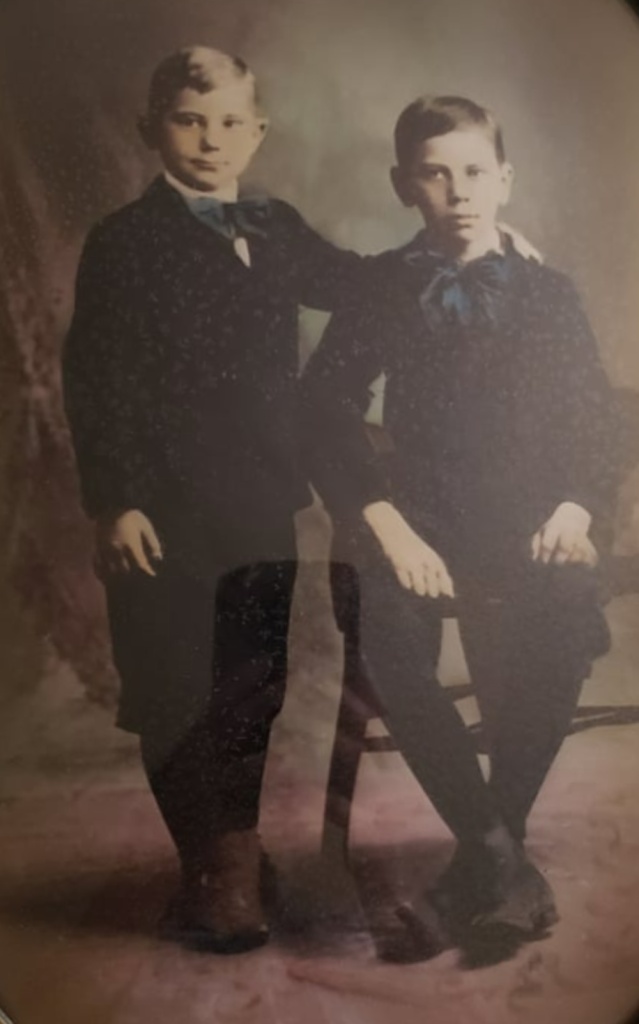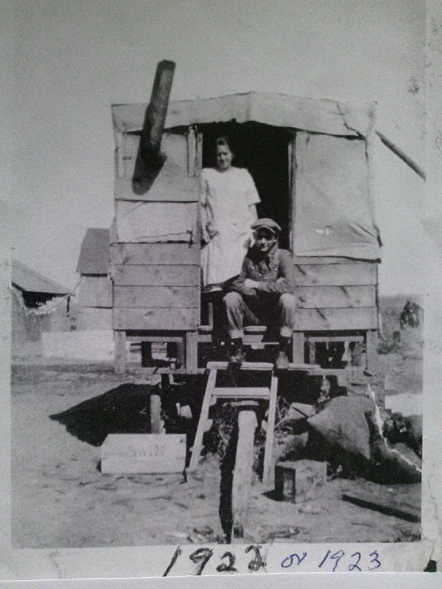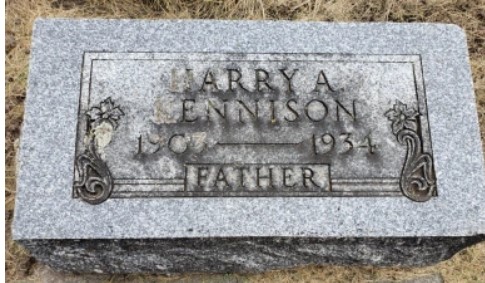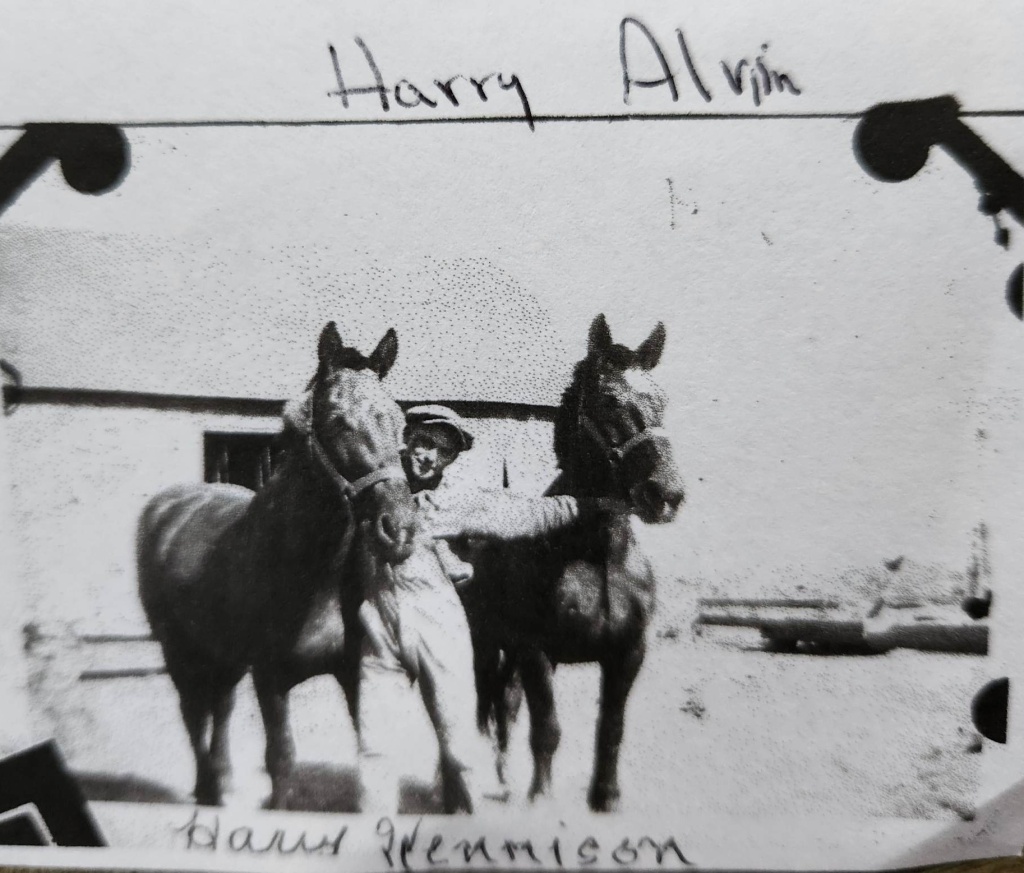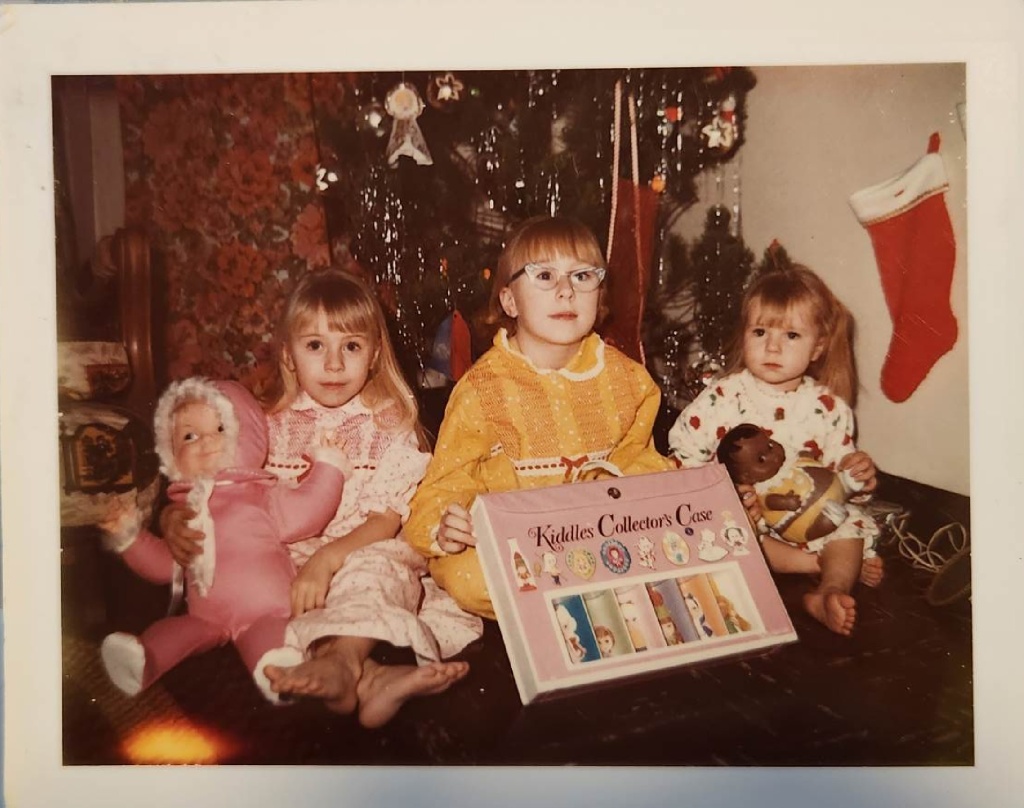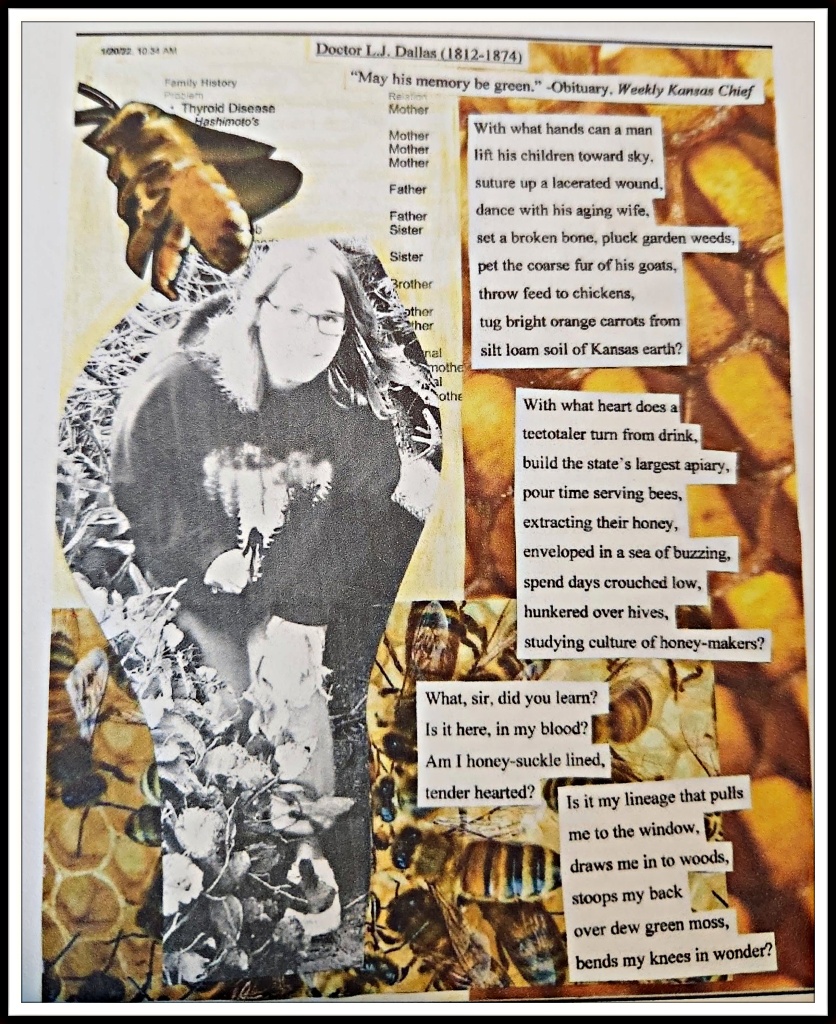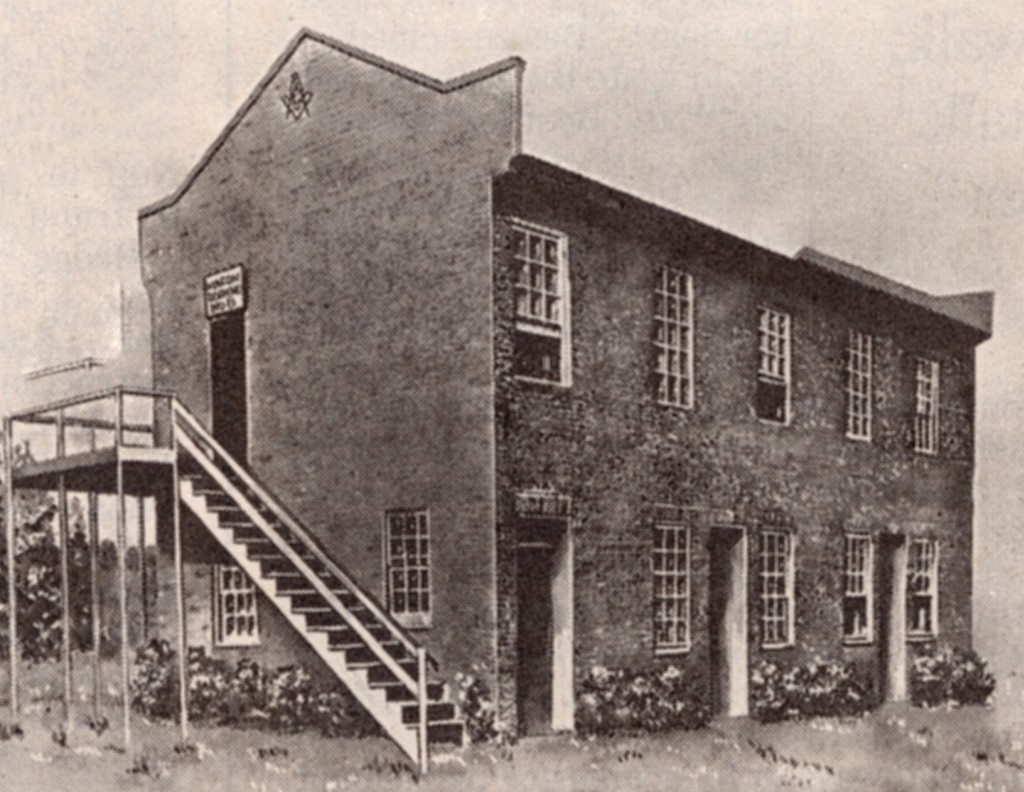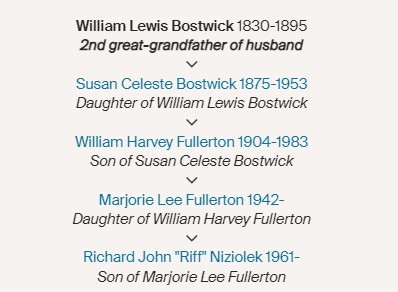
Irad Goodsell was born on a sweltering June day in 1820. (I’m making that up. How do I know what the day was like? He could’ve been born in the middle of the night for all I know!) What I do know is that it was a Saturday–June 3, 1820–when Irad’s mother, Louisa Garlick Goodsell, brought her little boy into this world. Irad’s father, David, was a farmer and the family lived in Portage County, Ohio, near Nelson Township. Irad was the youngest of seven children.
When Irad was 24 years old, he married Lydia Brown, who was three years his senior. The couple were married on August 28, 1844 in Portage County. They had three children–David, Dennis, and Evander.
When the census taker came around in 1860, they found the Goodsell family living and working right where we’d left them, near Nelson Township. Irad was farming, and they had a few extra people living with them. Louisa, Irad’s widowed 78-year-old mother, was in the household, as was his brother Samuel. Another man, 25-year-old Henry Graham, was also living with the Goodsells. Both Samuel and Henry were also farming. Henry could have been a hired hand, or maybe simply a boarder.
Lydia passed away on July 28, 1864, leaving Irad a widower at the age of 44. The couple’s sons were 19, 14, and 12 when their mother died.
On Wednesday, September 14, 1864, I found a mention of Irad in the Western Reserve Chronicle, from Warren, Ohio:
‘ASSAULT–On the 16th ult, some young men from Warren visited the ledges in Nelson and were well provided with “liquid comforts.” Having imbibed the proper quantity of “fighting ardent,” they set upon Geo. Bruce, of Parkman, who happened to pass their quarters, and knocked him from his sulky under is horse’s heels. The horse kicked him and the rowdies pounded him. Irad Goodsell undertook to go to the assistance of Bruce, but was repulsed and driven back. The assaulting party again pursued Bruce, and coming up to him, again pounded him. Constable E.A. Stockwell, accompanied by H.L. Bancroft and L.O. Mills, went to Warren on the 17th, to arrest the party engaged in the fray. Officer Stockwell was severely handled by the rogues, but succeeded in arresting them. They were brough back to Nelson, accompanied by Attorney Forrist, and settled the matter by paying Bruce and Stockwell $25 each.–Portage Co. Democrat.‘
Even though Irad wasn’t successful, I’m glad to see he tried to help the man! The ‘ledges’ the article mentions is Nelson Ledges Quarry and it looks beautiful!
Two years later, Irad married for the second time. His bride was Permelia A. Ingram Linton, a widow herself.
Now, Permelia was born about 1937 or 38, also in Ohio. I have not been able to determine with any certainty who her parents were, though there were a lot of Ingrams in Ohio at the time.
Permelia’s first husband was a man named Joshia Linton. The couple was married about 1858 in Ohio, and had one daughter–Anna, born on January 3, 1860 in Port Clinton, Ottawa County, Ohio.
By July of 1860, when the census takers found the Linton family, they were living in New Rochester, Wood County, Ohio, where Josiah was working as a blacksmith. This census shows both Josiah and Permelia as having been born in Ohio. (Of course, that information is only as good as the person who jotted it down!)
What we know about this time in history is that in April, the first shots of the Civil War were fired. Permelia’s Josiah didn’t waste any time. He enlisted on April 16th, 1861 in the Ohio Volunteer Infantry, fighting on the Union side. I don’t know all the particulars, but I believe he was mustered in and out of several companies. This was pretty common, as many times the soldiers served three months stints. Records show he worked as a farrier while serving. Josiah mustered in once again to the 6th Regiment, Ohio Volunteer Infantry, Company F, on October 28, 1863. The next record I find is when he died on January 28, 1864 from pneumonia in the U.S. General Army Hospital in Cleveland, Ohio. Josiah was 33 years old.
The Civil War is still raging and now Permelia is a widow with a four-year-old daughter. In April of that same year, she applied for a widow’s pension, but for whatever crazy reason, was denied. As I sit her typing that these 160 years later, I’m angry for her and little Anna. How dare they deny a paltry pension to the widow of a man who fought for our country. How dare they!
With the death of Irad’s Lydia and Permelia’s Josiah, we see the two coming together to blend their families two years later. On March 5, 1866, Irad and Permelia were married in Portage County, Ohio. Irad’s second son, 16-year-old Dennis, signed as the witness swearing both parties were old enough to marry and neither had a living spouse.
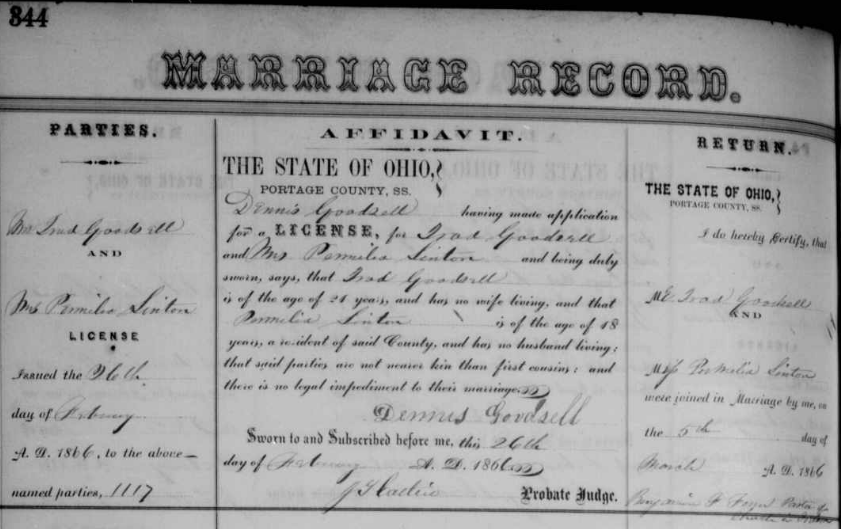
The Western Reserve Chronicle printed a Partnership Notice in the Oct. 3, 1866 edition of the newspaper. It states that four men are forming a partnership to manufacture and sell boots and shoes, developing an invention started by L.M. Brett for putting batting into irregular forms and felting them. The four men were J.P. Tuttle, Irad Goodsell, John L. Greer, and M.L. Brett. It stated the partnership would continue for three years and would be called Tuttle, Greer, and Company.
By January 9, 1867, just a few months later, the men must have had a falling out, because the paper now printed a Dissolution of Partnership. Two of the men had dropped out and the business would now be called Tuttle and Goodsell and carried on by J.P. Tuttle and Irad. I wish I knew what kind of shoes they were making!
In 1870, the census taker came around again. Irad and Permelia were living near Nelson Township. Irad was still farming and Permelia keeping house. Twin girls, Ada May and Ida June, had been born t the couple. Permelia’s daughter, Anna, is now 10. I honestly don’t know who the Joseph is who is living with the family, unless he is one of Irad and Lydia’s boys who goes by his middle name. That is entirely possible. Irad’s brother, Samuel, is also still living with the family.

Fast forward ten years to June 17th, 1880 and the census taker is knocking on the door again. The Goodsells are still in the same spot. Irad is still listed as a farmer, though it is noted he is ill will paralysis, at least on the day the numerator was visiting. The twins, Ida and Ada, are attending school, and Anna is now 19 and working as a milliner, (a hat maker). A young man named Eli Overly is living with the family and working for them as a hired hand.
On January 6, 1892, The Democratic Press out of Ravenna, Ohio printed some sad news for the Goodsell family:
‘Nov. 10th, Mrs. Ada Hurd, wife of Frank Hurd and twin daughter of Irad Goodsell, residing with her father, died, aged 24 years. The other daughter, Mrs. Ida Hescock, with her husband, residing on the Pacific coast, has just arrived from the far off Washington State, to gladden the heart of her aged father. May she long remain as his comfort and consoler. Probably but few men are as unconsolable as the bereaved husband over the death of his young bride, as is Mr. Frank Hurd.’
‘Of mirrored smiles and golden curls, and bridal wreaths with blossoms crushed, and hopes, that lived but one short day, then died of grief-in sorrow hushed.’
I’m a little confused by this, because it doesn’t mention Permelia, the girls’ mother, at all. Was she not living with Irad for some reason at this time? She died three years AFTER her daughter, so I’m not sure what was going on there.
Permelia passed away on November 26, 1895 at the age of 57 or 58. Irad was a widower for the second time. Permelia is buried in the Prentiss Cemetery in Nelson Township, Ohio – Plot #R07 606
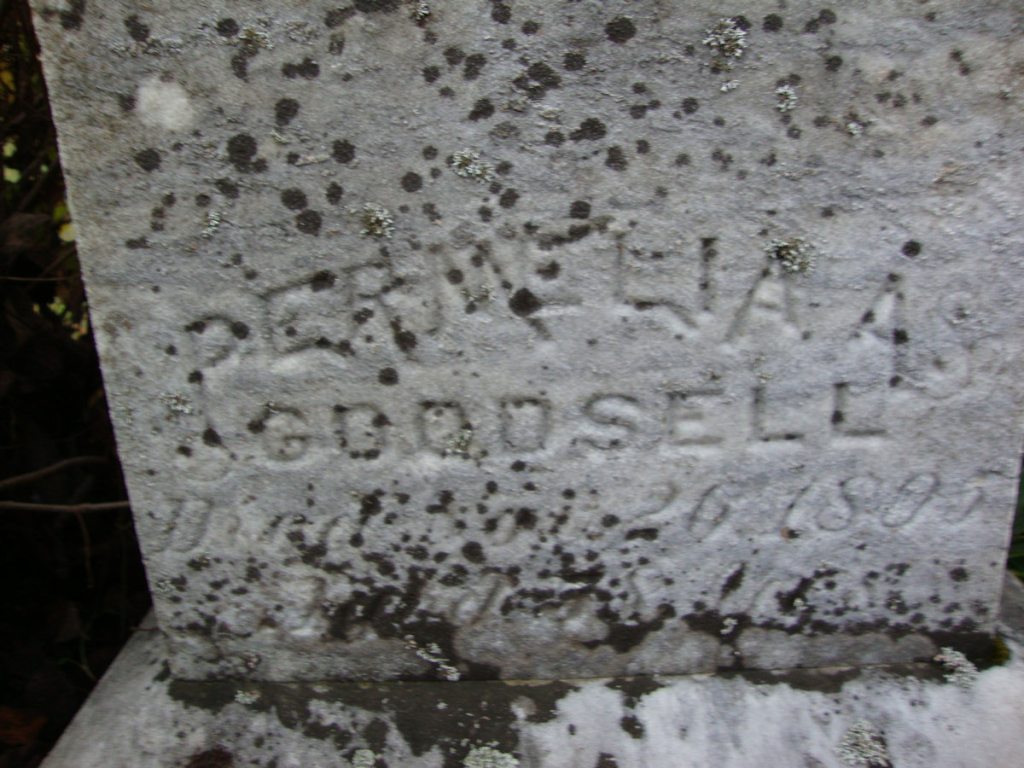
On June 6th, 1900 here comes those pesky census takers again. Irad is now 80 but still farming his place. Daughter Ida has married a man named Ward Hescock and the couple is living with her father while Ward is farming with his father-in-law. The Hescock’s have three little girls–Anna May, Ada Gertrude, and Mildred E. Two nineteen-year-old women, Mabell Hopkins and Winfild Hankin are working for the family as servants.
A year later, on February 14th, 1901, Irad passes away 80 years of age. Interestingly enough, he has two gravestones very far apart. One is in Nelson Township, Ohio and the other is in Wallowa, Oregon. I think I have a solution to the mystery.
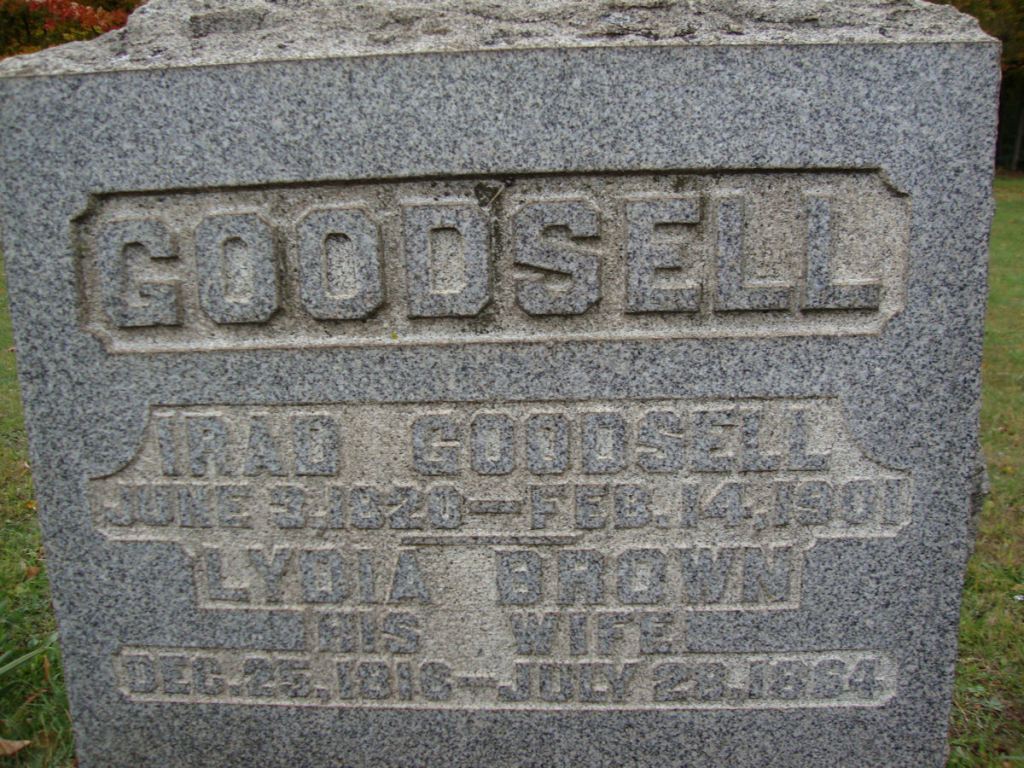
Here is the headstone for in Ohio where it appears Irad is buried with his first wife, Lydia.

Here is the headstone in the Wallowa Cemetery in Oregon, where Irad is buried next to his great-grandson, Willard Sannar. I took this picture and the next one myself.
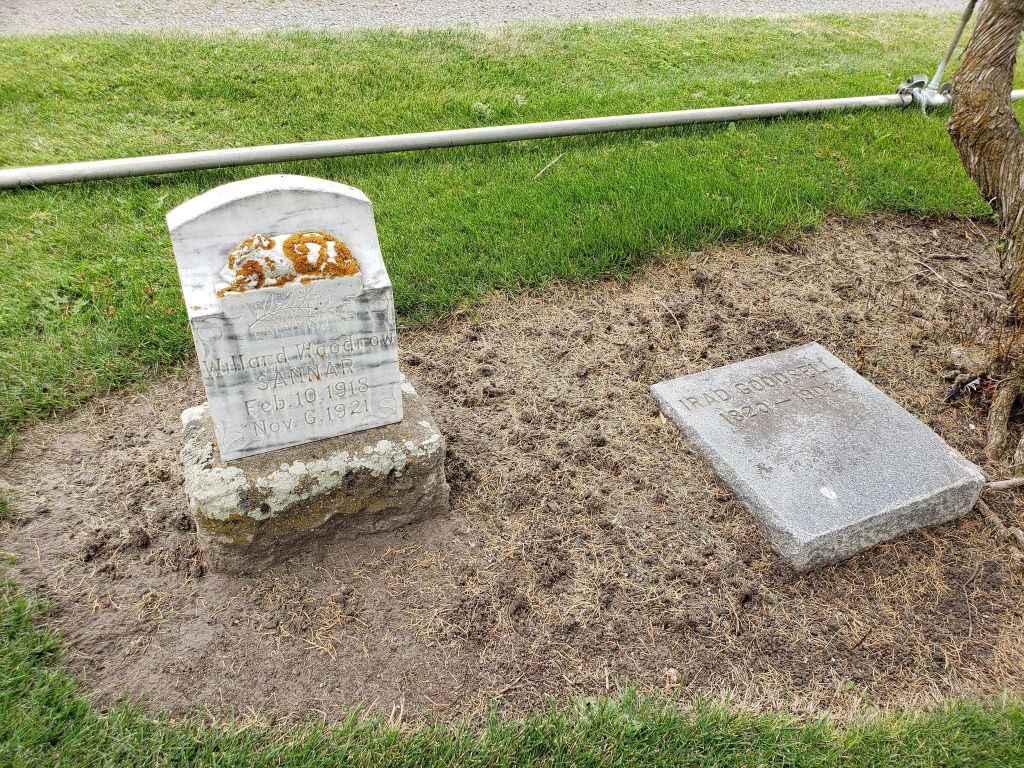
Here’s my theory – I believe when Lydia passed away, Irad had his name engraved on the headstone as well, fully intent on being buried next to her. In the meantime, life moved on, her remarried, had more children, and ended up, very late in his live, in Oregon living with his daughter. After he passed, his sons from his first marriage had the dates of his birth and death engraved on the original headstone. Again, this is just my theory and I’m not about to dig up two graves to find out which one he is really resting under!

Irad and Permelia are my 3x great-grandparents.


